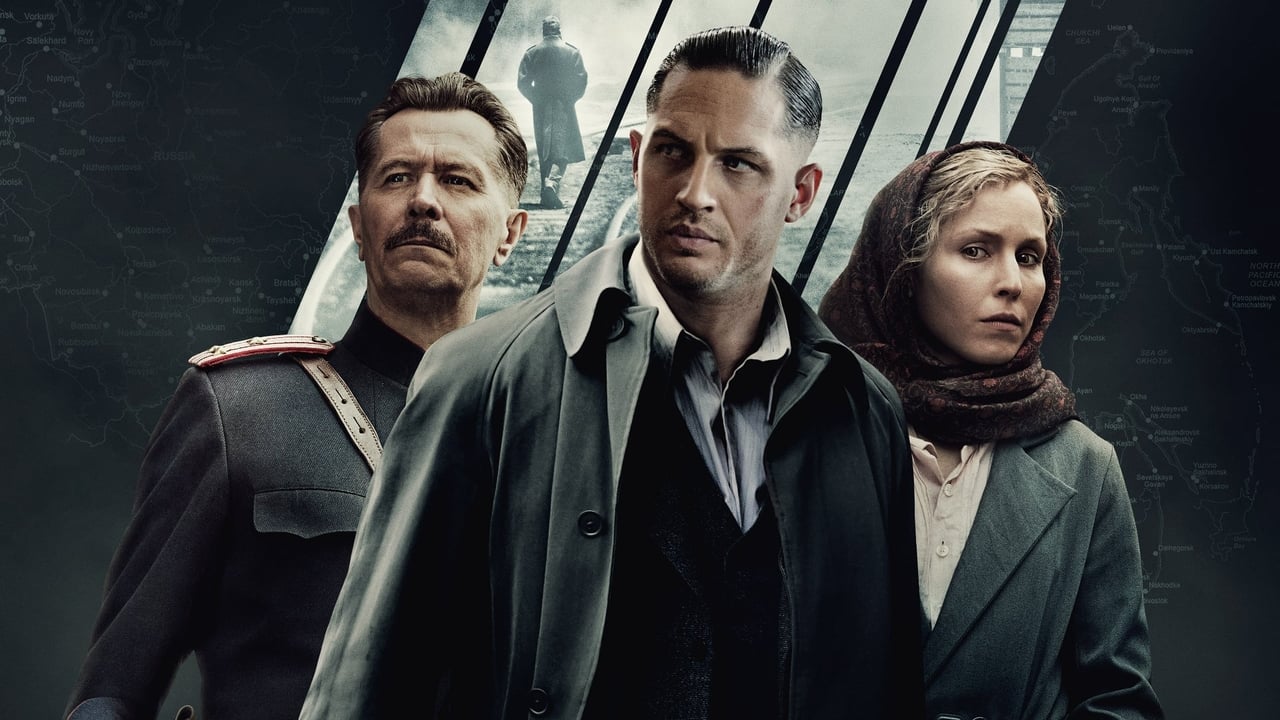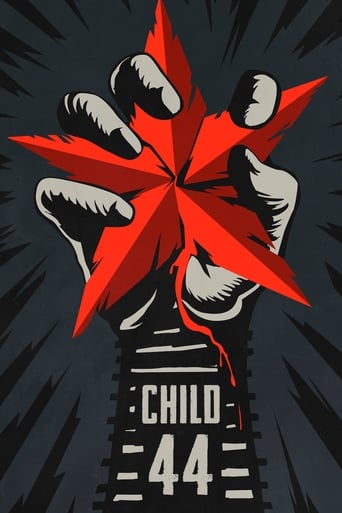

Child 44 is a total mess and huge disappointment. I expected so much more. Like other reviewers, I wanted to like this film. Actors are wasted and it's very hard to understand the accents. A superficial poorly directed movie. I was frustrated with it.
... View MoreBeautifully and efficiently told story of a couple living in post war socialist Ukraine, trying to live normal lives when all lives are controlled by 'the state'. Daily life constrained by fear, lies, and the absolute power of authorities at various levels of seniority. Mixed into this is a back story of a serial child killer. What hope for justice in this environment where justice is whatever 'the authorities' want it to be? The real monsters are everywhere, have free reign and are unpunished whilst the innocents suffer repression. This fine film might chill the heart of anyone purporting to romanticise life under socialism.This tale is also a chilling glimpse of a dystopian future. Beautifully acted, this is not a slow plodding European arty movie. It is fast, efficiently told, and has avoided being sensationalist. The script is precise and the main character has the gravitas, integrity and virtue that a viewer can admire in a hero. I thought this movie was a thousand times better than the ridiculous Dunkirk supposedly depicting war and madness. And what can I say about the much undeservedly feted movie 'Mother' that attempts to depict a similar theme as this film with nonsensical storyline and gratuitous violence? I don't know why Child 44 is not admired more. It is a very fine film, and deserves accolades.
... View MoreBeing a daughter of a historian, The movie factually depicts the interrogations & investigations led by the Soviet Secret Police. " There is no murder in paradise, per Stalin's reign", Tom Hardy's performance was overlooked by critics, as his lead role as Leo Demidov, takes the viewer on an emotional roller-coaster.
... View MoreChild 44 follows a man who, after learning of the deaths of several children, begins a search for the man who murdered them, despite the fact that they were written off as accidents. I love me a good crime thriller, really I do. And when I see a plot like this where the movie is brave enough to deal with a subject like murdering children, then it casts Tom Hardy, then color me interested. Unfortunately, the actual plot doesn't start until the last forty minutes of this 137 minutes film. And even then, none of it is really all that interesting or even easy to follow. In fact by the time the plot starts rolling the script just stops trying to make sense. There's a scene that, under normal circumstances, would sound pretty awesome where a bunch of people start fighting and killing each other on a train cart, but in context there isn't actually any. The scene begins when some random expendable character pulls out a knife and tries to attack the protagonists. Somehow said protagonists know exactly what he's planning the second he stands up, and this big fight ensues. Sure, it's cool, but it doesn't make any sense. At that point I gave up on trying to understand the movie. The actual finding of the killer ends up being super anti- climatic and watered down, and it's just not engaging at all. What about the 100 minutes leading up to the actual plot you may ask? Nothing happens. It's 'character development' where none of the characters are interesting and nothing that pulls, or more drags, the oncoming plot along are anything special. It's just a whole lot of nothing.Overall Child 44 is kind of boring and dumb for the vast majority of it, yet somehow worse when the actual plot starts. In the end I would never recommend this colossal waste of time and talent.
... View More